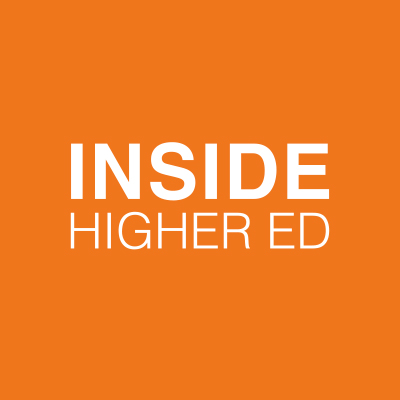
Higher Ed. Dive
August 19, 2022 Student Success, Value and Affordability
A student who is a parent and works 10 hours per week at a minimum wage job cannot afford tuition and child care at a public institution in any state. On average, these students need to work 50 hours per week to meet their expenses. Increasing the federal minimum wage, doubling the Pell Grant for low-income students, expanding on-campus child care, and collecting additional data about student parents are potential strategies to help mitigate this disparity.

Higher Ed. Dive
August 12, 2022 Admissions, Enrollment Management Trends
The Common Application will expand a pilot program that offers students who create Common App profiles and provide their academic histories automatic admission to select institutions. Representatives from the Common App said students were more likely to apply to institutions if they received automatic admission.

The Chronicle of Higher Education
August 04, 2022 Admissions, Enrollment Management Trends
In the weeks leading up to the start of classes, a portion of students who commit to attend a given university will “melt” away. Lost students leave gaps in campus budgets and vacant seats in classrooms. While efforts from enrollment managers have helped combat some melt, additional strategies may need to be explored to keep students engaged with the university.

Higher Ed. Dive
August 04, 2022 Enrollment Management Trends, Student Success
Colleges with vaccination requirements reduced the number of positive cases and deaths in surrounding areas. The mandates reduced the number of deaths by 5% at four-year residential colleges, and also reduced new COVID-19 cases by 339 per 100,000 county residents.

Higher Ed. Dive
August 02, 2022 Enrollment Management Trends, Value and Affordability
New Jersey regulators can revoke higher education institutions’ authority to grant degrees and credentials if they don’t meet quality standards. A new law signed last week requires state agencies to create metrics for gauging the success of career-centered programs, based on the ratio of tuition rates versus graduates’ anticipated earnings. This benchmark applies to all institution types.

Higher Ed. Dive
August 02, 2022 Enrollment Management Trends, Student Success
According to recent research from the National Student Clearinghouse, only 51% of students earned 24 or more credits in their first year of college, and only 28% of first-year students earning 30 or more credit hours. While the rate of credits earned varied based on institution type, degree sought, college readiness, enrollment intensity, and race and ethnicity, most students are not on track to graduate in four or five years.

Higher Ed. Dive
July 27, 2022 Admissions, Enrollment Management Trends
More than 1,700 colleges and universities are not requiring test scores for admissions, while a few test-optional institutions reverted to their previous policies. The significant number of institutions maintaining test-optional policies suggests the assessments will have a permanently diminished role in admissions.

Inside Higher Ed
July 12, 2022 Enrollment Management Trends, Student Success
According a new report, differences in advising at higher education institutions affected racial and ethnic disparities in graduation rates. Those with narrower disparities had lower advising caseloads, greater use of advising technologies, and more access to student data. These differences carry valuable lessons for institutions trying to close equity gaps.

Inside Higher Ed
July 06, 2022 Enrollment Management Trends, Value and Affordability
The House Appropriations Committee approved a funding plan to increase funding for the Education Department by 13 percent for 2023. The bill would allocate over $3.9 billion for higher education, and $24.6 billion for federal student aid programs. Increases to the Pell Grant would have a greater impact on students attending colleges with lower tuition prices.

Higher Ed. Dive
July 06, 2022 Enrollment Management Trends, Value and Affordability
Operating revenue increased in 2021 due to boosted state funding, federal pandemic relief, and institutions cutting expenses. However, enrollment declines, lower auxiliary revenue and increased financial aid caused revenue from students to decrease. Operating revenue grew by a median 3.1%, compared to 0.6% in 2020.